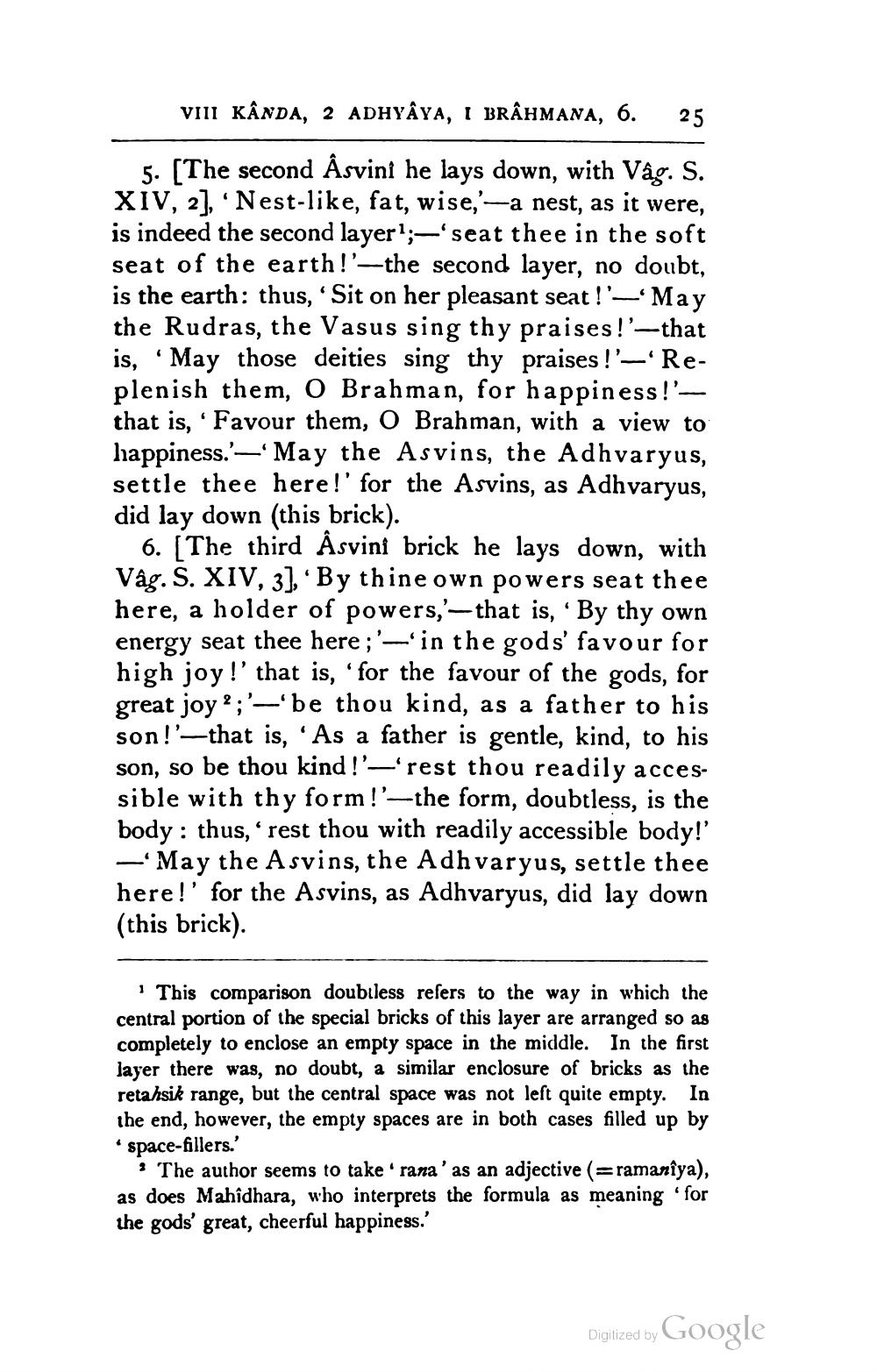________________
viu KÂNDA, 2 ADHYAYA, I BRÂHMANA, 6.
25
5. [The second Åsvini he lays down, with Vâg. S. XIV, 2], 'Nest-like, fat, wise,'-a nest, as it were, is indeed the second layer";—'seat thee in the soft seat of the earth!'—the second layer, no doubt, is the earth: thus, ' Sit on her pleasant seat!'-—May the Rudras, the Vasus sing thy praises !'--that is, ‘May those deities sing thy praises !'-'Replenish them, O Brahman, for happiness!'that is, 'Favour them, O Brahman, with a view to happiness.'—May the Asvins, the Adhvaryus, settle thee here!' for the Asvins, as Adhvaryus, did lay down (this brick).
6. The third Åsvini brick he lays down, with Vâg. S. XIV, 3), By thine own powers seat thee here, a holder of powers,'— that is, ' By thy own energy seat thee here; '-'in the gods' favour for high joy!' that is, 'for the favour of the gods, for great joy ? ; '-'be thou kind, as a father to his son!'—that is, 'As a father is gentle, kind, to his son, so be thou kind !'—'rest thou readily accessible with thy form!'—the form, doubtless, is the body: thus,“ rest thou with readily accessible body!
—May the Asvins, the Adhvaryus, settle thee here!' for the Asvins, as Adhvaryus, did lay down (this brick).
1 This comparison doubtless refers to the way in which the central portion of the special bricks of this layer are arranged so as completely to enclose an empty space in the middle. In the first layer there was, no doubt, a similar enclosure of bricks as the retahsik range, but the central space was not left quite empty. In the end, however, the empty spaces are in both cases filled up by space-fillers.
· The author seems to take rana' as an adjective (=ramanîya), as does Mahidhara, who interprets the formula as meaning for the gods' great, cheerful happiness.'
Digitized by Google




